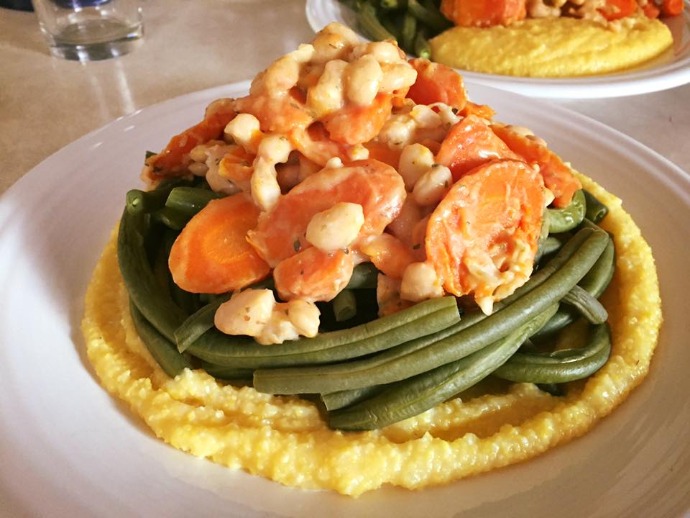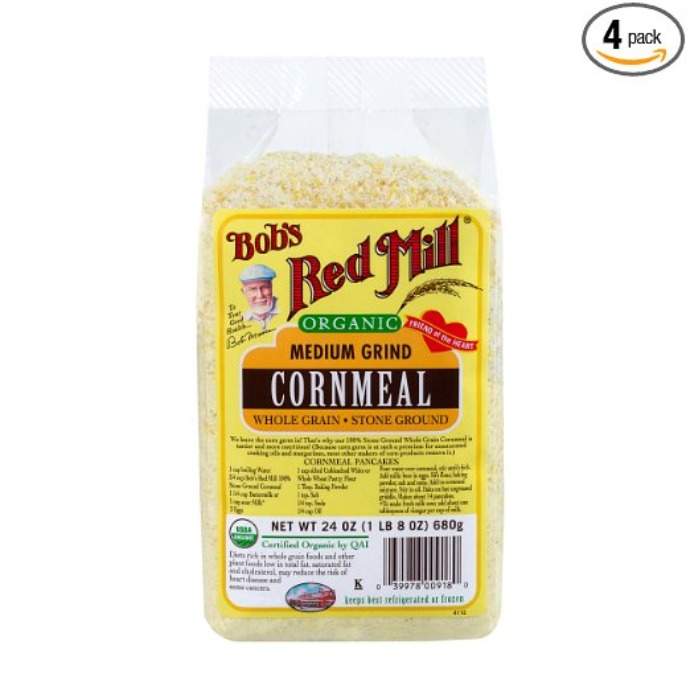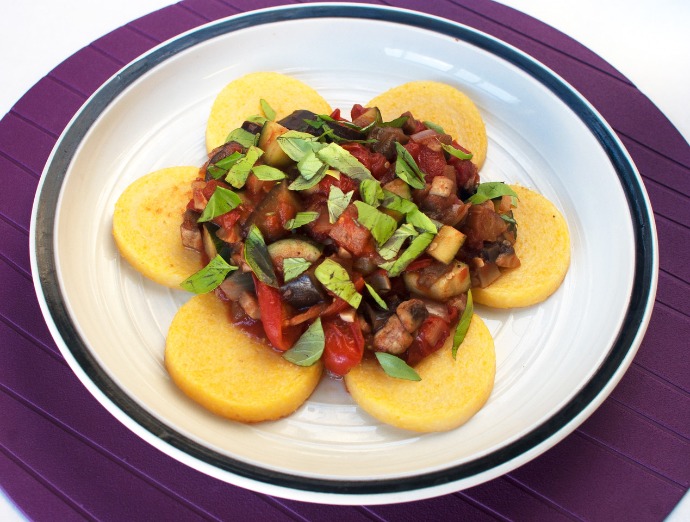In honor of this week’s Parisan Polenta:

I’m getting to the bottom of this crazy cornmeal/polenta/grits confusion.
In this post you’ll learn the difference between:
- Cornmeal
- Polenta
- Grits
- Polenta Grits
- Coarse Cornmeal
- Corn Flour
- Masa Harina
It’s a hot damn mess in the corn-product aisle of the grocery store thanks to the fact there are no regulations or rules around the name of corn-based products in the U.S.
Aaand if you’re in the U.K. it gets even trickier …
Here’s the 411:
Cornmeal is ground, dried corn. It comes in yellow and white, depending on which type of corn it is made from.

Buy Quaker Yellow Cornmeal on Amazon.
You’ll find this at most supermarkets and stores like Target or Walmart.
Although it doesn’t say it on the package, this brand has a finer consistency.
Some stores, particularly healthy food and natural stores, sell medium grind and coarse corn meal which is granulated-looking.
Bob’s Red Mill, for example, sells a “medium” grind.

Buy Bob's Red Mill Cornmeal on Amazon.
For cornbread, use the finer cornmeal unless you like gritty cornmeal.
Cornmeal vs. Masa Harina

Masa Harina is finely ground cornmeal, BUT with one little addition: before the corn is ground, it is soaked in lime or wood-ash lye water, which adds a distinctive flavor to the corn meal (though it’s not lime-y per se).
If you decide to make your own corn tortillas this is what you want.
POLENTA
Now here is where things get super confusing...
In the culinary world, the term “polenta” refers to a cooked dish.
This specifically:

Meal Mentor's Jerk Polenta.
It’s a creamy dish.
This term also applies to ANY kind of grain-mush (i.e. porridge) in a culinary text.
That means if you see a dish on a restaurant menu that says it’s served over polenta or with polenta, it may not be corn-based polenta. It could be an oatmeal-like dish made from semolina flour, buckwheat, farro, etc.
BUUUT STILL THERE’S MORE:
At the supermarket You’ll find this “polenta”:

And sometimes this polenta:

>.<
>.<
>.<
The ‘polenta’ in a tube is a premade polenta (the dish) shoved into tube.
It is always corn-based.
The tube product is also pretty firm (you can cut slices) which means it doesn’t have the same consistency as freshly cooked polenta, but you can heat tube polenta on the stove and mash it water or almond milk to turn it back into the creamy version.

I use tube polenta on my meal plans frequently because it’s ready-to-eat and who doesn’t love a shortcut?
Tube polenta also bakes beautifully. I love cutting rounds and baking or grilling it.

Meal Mentor's Ratatouille Polenta Stacks
Here’s a recipe for Polenta Fries
Circling back to the dry polenta in a bag…

As far as I can tell, this is no different than coarse cornmeal. My guess is some manufacturers started calling it “dry polenta” instead of “cornmeal” to help consumers identify the correct grain for making polenta because you wouldn’t want to use the finer cornmeal.
You might also find instant or quick-cooking polenta at bigger supermarkets. This is basically pre-processed cornmeal designed to reduce cooking time (kinda like quick oats vs. rolled oats).
Polenta vs. Grits
In terms of consistency, grits and polenta (the dish) are pretty similar but while polenta can be made from any grain, grits can only be made from corn, or more specifically hominy
Most often white corn is used for grits, but you can find yellow girts too.

Buy white and yellow corn on Amazon.
I find “grits” have a different taste than coarse cornmeal/dry polenta. Grits are also a softer starch, so the end product tends to be creamier and smoother, almost like oatmeal.
You might also find instant or quick-cooking grits which are partially cooked before drying to reduce cooking time to 5-10 minutes.
Stone-ground grits are the most wholesome and nutritious form of grits. They also have the longest cook time: 45 minutes.
Lastly…
Corn Flour
Corn flour doesn’t have a lot of uses for the home cook unless you’re into breading things.
If you live in the U.K., however, what you call cornflour is what we call cornstarch.
In the U.S. corn flour super, ultra fine cornmeal. It’s so light and flour-like that you could easily mistake it for all purpose flour. (If you’re wondering if it can replace flour in recipes it can’t).
P.S. ALLERGIC TO CORN? See this post for corn substitutions. In addition to the Parisian Polenta, this week’s meal plan also include:
- Cajun “Chorizo” Soup
- Bistro Beet Burgers
- Greek Nachos & Greek Tacos
- Red Lentil Bolognese
- Coconut Cauliflower Curry
- Mushroom Quesadillas (new)
- Chinese Crunch Salad
- TropicQ Bowl (new)
- Parisian Polenta (new)
- Red Velvet Roll-Ups (new)














